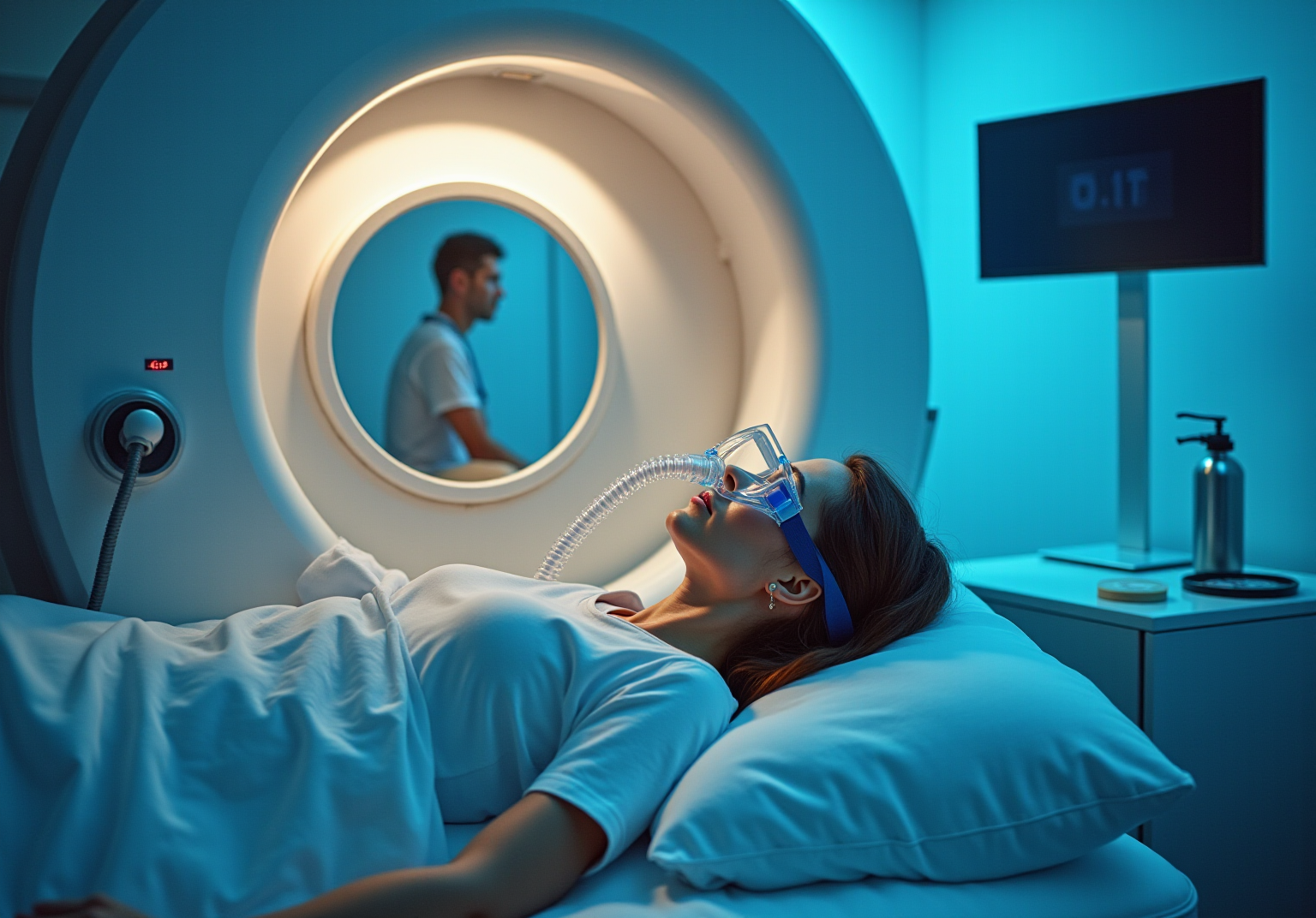Unlock Colour Therapy: Enhance Mental Health and Wellbeing

Overview
Colour therapy, also known as chromotherapy, significantly enhances mental health and well-being by leveraging specific colors to influence mood and emotional states. This article presents various techniques, including visualization and hue breathing, which serve as practical applications of this therapeutic approach. Notably, colors such as blue are recognized for promoting calmness, while yellow is associated with fostering joy. These insights demonstrate how engaging with these practices can profoundly improve emotional resilience and overall wellness, making a compelling case for incorporating colour therapy into daily routines.
Introduction
Colour therapy stands as a holistic practice, deeply rooted in the vibrational power of hues, offering profound insights into enhancing mental health and well-being. By comprehending how various colors influence emotions and energy levels, individuals can unlock a transformative approach to personal wellness. This understanding is not merely theoretical; it translates into actionable strategies that can significantly improve one's quality of life.
However, with a myriad of techniques and principles at play, the pressing question remains: how can one effectively integrate these vibrant strategies into daily life to truly harness their benefits? The journey towards optimal well-being begins with this exploration.
Define Color Therapy: Principles and Significance
Colour therapy, also referred to as chromotherapy, represents a holistic practice that harnesses the power of hues and their frequencies to enhance both physical and mental well-being. This approach is grounded in the understanding that colour therapy can significantly influence mood, energy levels, and overall health.
Each hue is believed to resonate with specific mental and physical conditions, making colour therapy a powerful tool for improving mental wellness. For example:
- Blue is commonly linked to calmness and tranquility.
- Red often stirs feelings of energy and passion.
Understanding these principles is essential for effectively into wellness practices, as it empowers individuals to select colors that align with their emotional needs and health goals.
Explore Techniques of Color Therapy: Methods for Application
Colour therapy encompasses a variety of methods designed to harness the restorative qualities of colors, each offering unique benefits for mental wellness and health. Among the most effective approaches are:
- Visualization: This technique entails envisioning a specific color surrounding you or filling your mind. For example, visualizing a calming blue light can significantly reduce anxiety and foster tranquility. As Kari Dawson remarked, "A good friend and a cancer survivor counseled me to visualize the chemotherapy working and destroying the cancer in my body," exemplifying the impact of visualization in real-life scenarios.
- Hue Breathing: In this practice, individuals focus on inhaling a particular hue while exhaling negativity. For instance, inhaling green can facilitate healing and restore balance, enhancing mental stability. Research indicates that visualization correlates with reduced anxiety and increased comfort, making this technique notably effective.
- Environmental Color Changes: Altering the colors in your environment—such as painting a room or employing colored lighting—can significantly affect mood and energy levels. A warm yellow hue may evoke feelings of joy, while cooler shades can promote relaxation. This aligns with the understanding that based on our surroundings.
- Colorful Foods: Integrating a variety of colorful fruits and vegetables into your diet not only improves physical health but also boosts mental well-being. Each hue represents different nutrients and benefits, supporting a holistic approach to wellness.
By exploring these techniques, individuals can discover which methods resonate most effectively with them, thereby enhancing their mental health and overall wellness. Although the success rates of these methods vary, consistent practice of visualization and hue techniques can lead to significant improvements in emotional resilience and overall wellness.
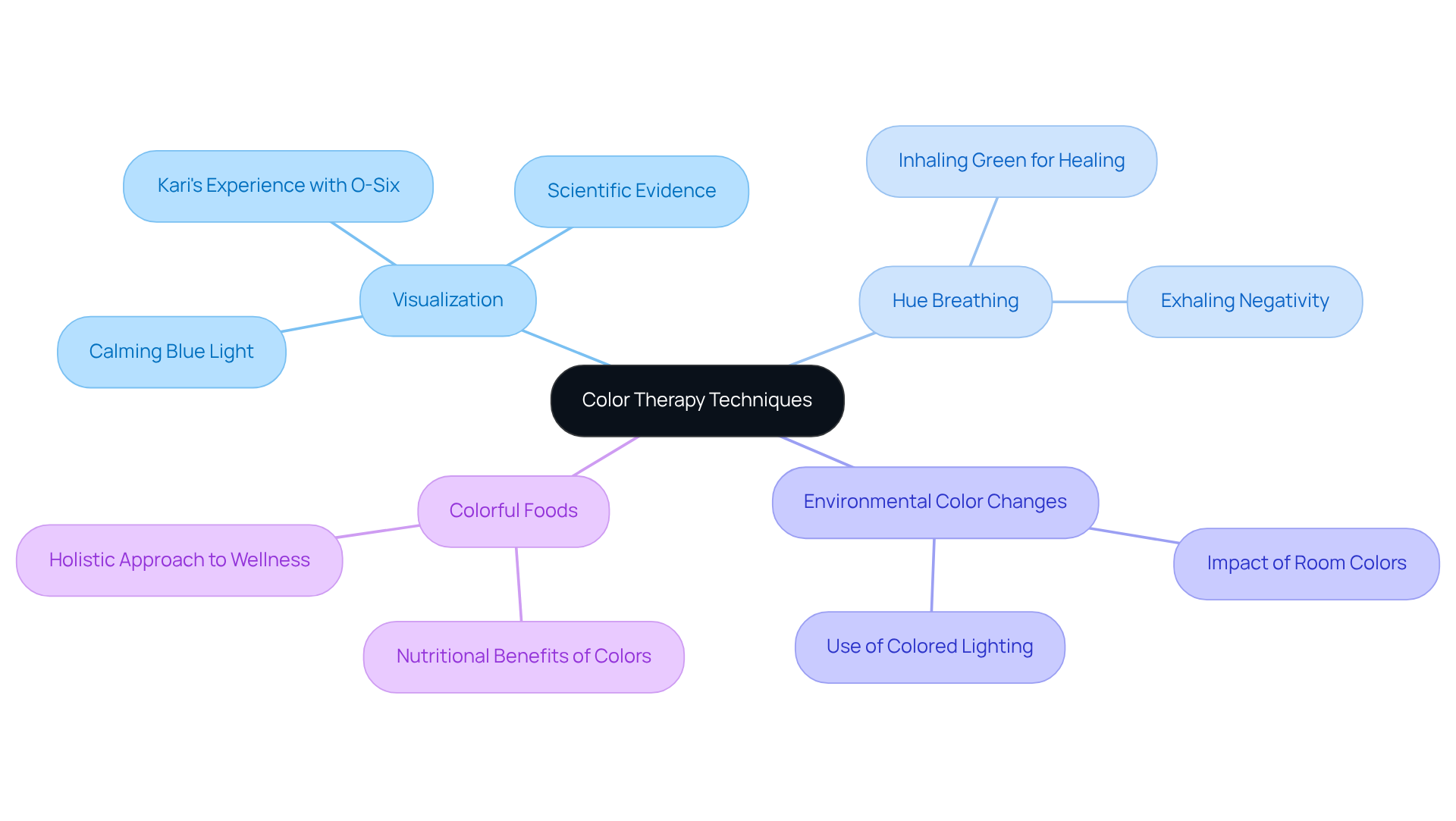
Understand Benefits of Color Therapy: Enhancing Mental Health and Wellbeing
Colour therapy offers a multitude of benefits that can significantly enhance mental health and overall well-being. Among these key advantages are:
- Stress Reduction: Colors such as blue and green are well-known for their calming effects, effectively alleviating stress and anxiety. Research indicates that exposure to these hues can lead to a substantial reduction in stress levels, promoting a sense of tranquility. For instance, studies show that individuals exposed to blue light experience a decrease in cortisol levels, a key stress hormone.
- Mood Enhancement: Bright hues like yellow and orange are linked to uplifting spirits and fostering feelings of joy and positivity. Research suggests that these colors can , making them ideal for environments where happiness and creativity are desired. According to Lars VB, "Colors such as orange and yellow can invigorate and uplift, promoting a cheerful mindset."
- Increased Focus and Productivity: Shades of green and blue not only soothe but also enhance concentration and cognitive function. Integrating these colors into workspaces can lead to heightened productivity, as they create an atmosphere conducive to focus and clarity. Research demonstrates that environments featuring green elements can boost cognitive performance by as much as 20%.
- Emotional Recovery: Colour therapy serves as a powerful tool for processing emotions and aiding in trauma recovery. By engaging with specific hues, individuals can explore and express feelings in a safe environment, facilitating personal healing. Case studies indicate that those utilizing colour therapy methods report a significant decrease in anxiety and an improvement in emotional resilience.
Recognizing these benefits allows individuals to appreciate the essential role of colour therapy in their wellness journey, highlighting its potential to cultivate a healthier mindset and enhance overall quality of life.
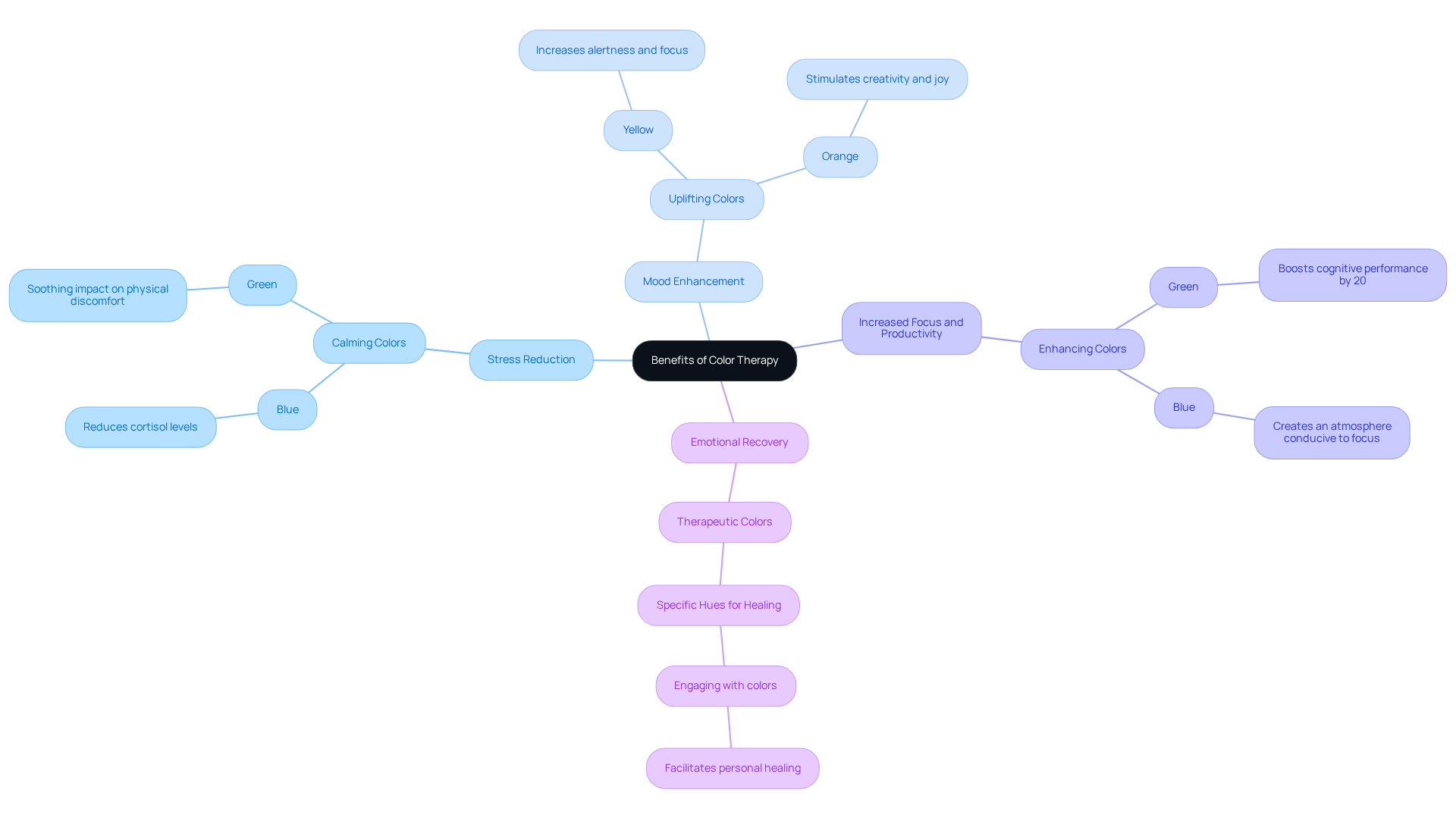
Implement Color Therapy: Practical Steps for Daily Life
Incorporating into everyday life is not only straightforward but also highly beneficial. Begin by establishing a vibrant atmosphere in your living or working space. Adorn your environment with hues that enhance the mood you wish to achieve; consider using artwork, cushions, or paint to introduce these colors effectively.
Next, practice color visualization. Dedicate a few minutes each day to visualization techniques. Focus on a hue that resonates with your current emotional state and visualize it enveloping you, fostering a deeper connection with your feelings.
Additionally, aim to incorporate colorful foods into your meals as a form of colour therapy. Including a variety of fruits and vegetables not only enriches your diet but also aligns with the principles of hue therapy, promoting overall wellness.
Moreover, select garment shades that reflect how you wish to feel. Wearing vibrant hues can elevate your mood, while gentler shades can cultivate tranquility, allowing you to express your emotions through your wardrobe.
Finally, engage in hue breathing exercises. Allocate time to practice this technique, focusing on inhaling shades that promote healing and exhaling negativity. By following these steps, you can seamlessly integrate colour therapy into your life, enhancing your mental health and overall well-being.
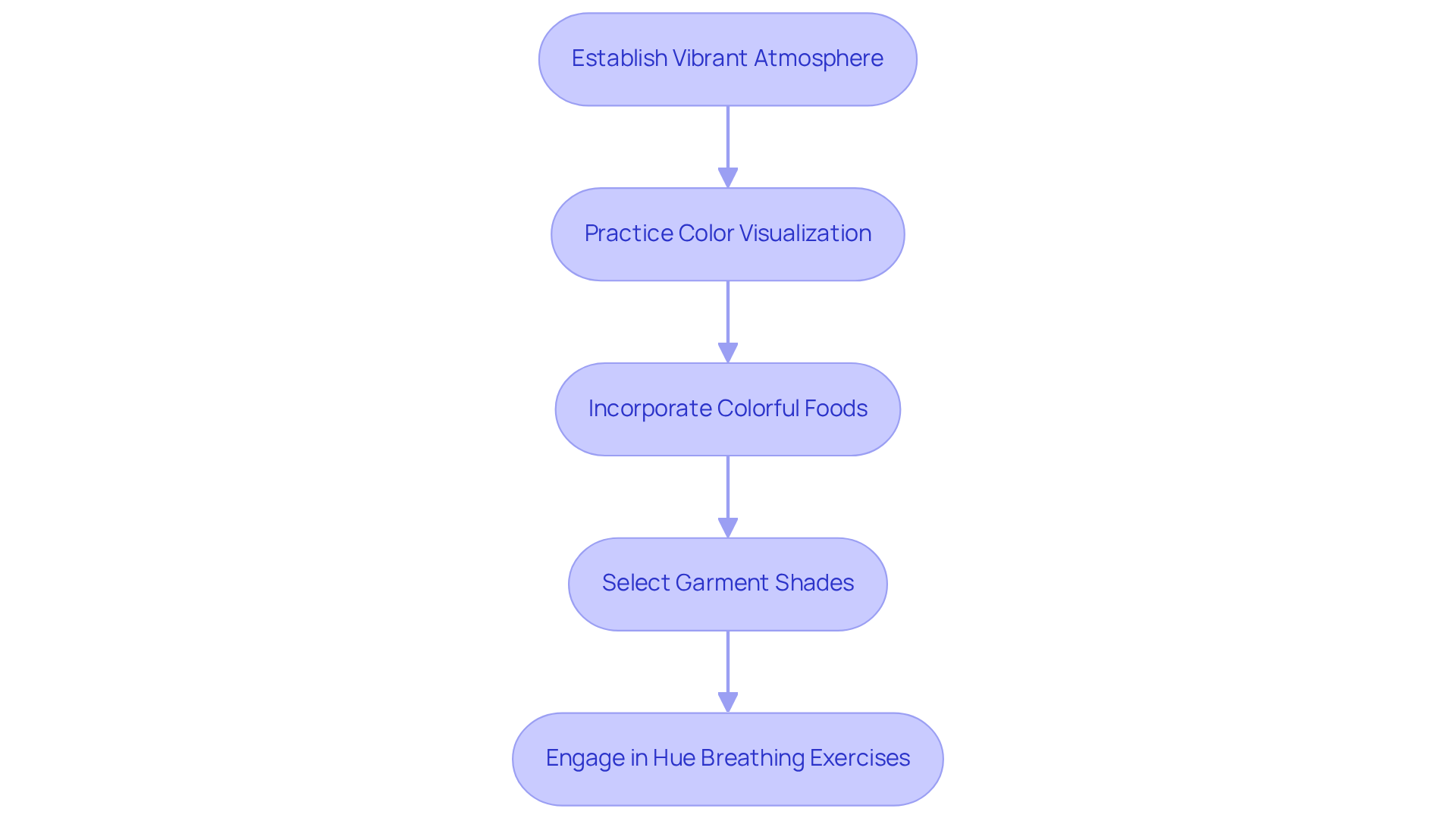
Conclusion
Harnessing the power of color therapy can profoundly transform mental health and overall well-being. This holistic practice emphasizes the significance of colors in influencing mood, energy, and emotional states, allowing individuals to connect with their feelings and enhance their wellness journey through intentional color choices.
The article delves into various techniques and benefits of color therapy, from visualization and hue breathing to the impact of colorful environments and foods. Each method offers unique advantages, such as:
- Stress reduction
- Mood enhancement
- Increased focus
- Emotional recovery
These aspects showcase how color can be a vital tool in cultivating a healthier mindset. The practical steps outlined for integrating color therapy into daily life further empower individuals to take charge of their mental health.
Embracing color therapy is not merely a trend but a meaningful approach to enhancing well-being. By applying these techniques, individuals can create environments and practices that resonate with their emotional needs, fostering resilience and positivity. As research continues to unveil the profound impact of color on mental health, the call to action is clear: explore and implement color therapy in everyday life to unlock its transformative potential.
Frequently Asked Questions
What is color therapy?
Color therapy, also known as chromotherapy, is a holistic practice that uses the power of colors and their frequencies to enhance physical and mental well-being.
How does color therapy influence well-being?
Color therapy can significantly influence mood, energy levels, and overall health, making it a powerful tool for improving mental wellness.
What are some examples of colors and their associated effects?
Blue is commonly linked to calmness and tranquility, while red often stirs feelings of energy and passion.
Why is it important to understand the principles of color therapy?
Understanding these principles is essential for effectively integrating color therapy into wellness practices, as it helps individuals select colors that align with their emotional needs and health goals.

